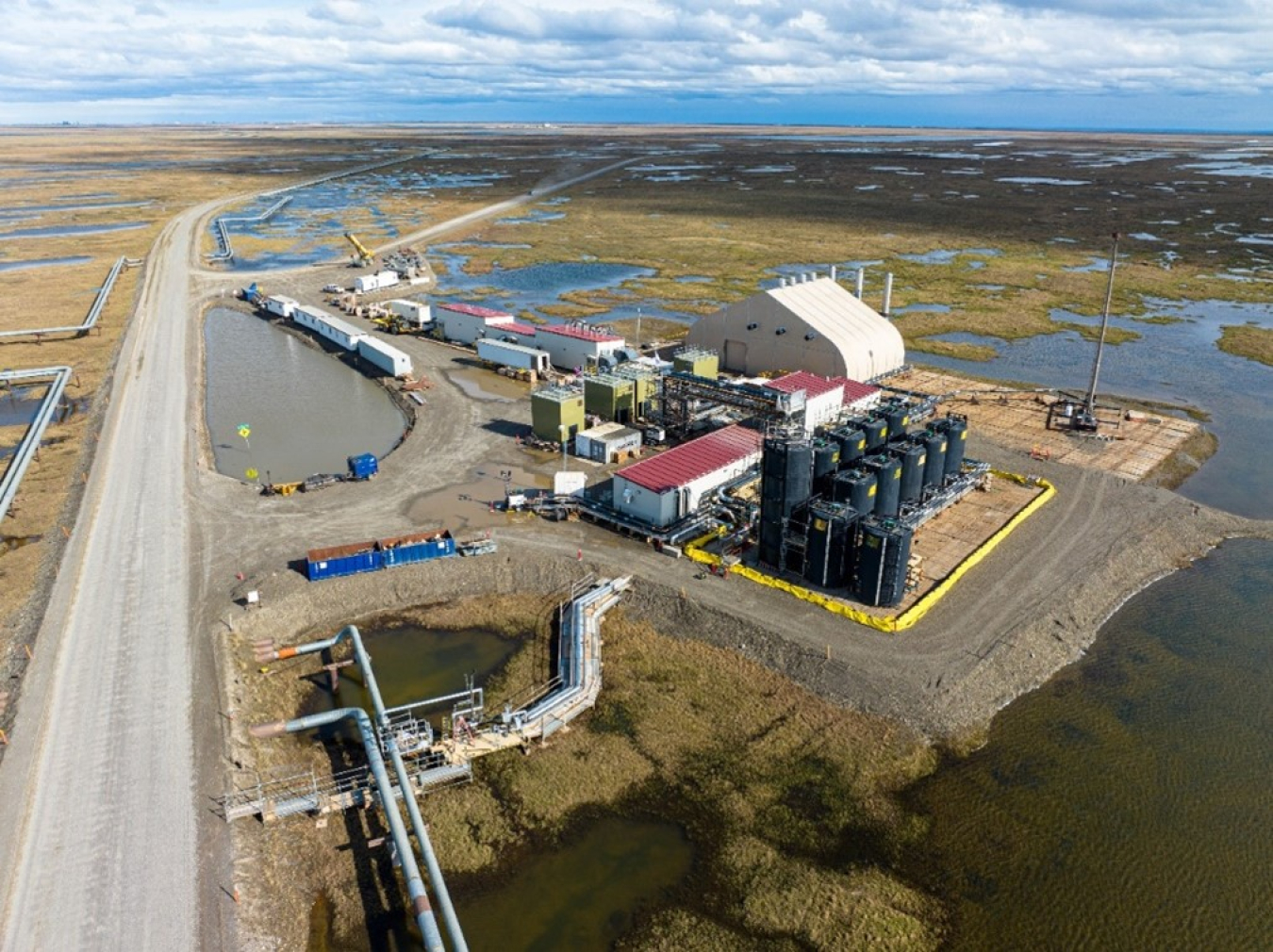The U.S. Department of Energy’s (DOE’s) National Energy Technology Laboratory (NETL), as a part of an international partnership, are investigating the resource potential of gas hydrates within the Prudhoe Bay Unit on the Alaska North Slope.
Office of Fossil Energy and Carbon Management
October 30, 2023
The U.S. Department of Energy’s (DOE’s) National Energy Technology Laboratory (NETL), as a part of an international partnership, are investigating the resource potential of gas hydrates within the Prudhoe Bay Unit on the Alaska North Slope.
Gas hydrates are naturally occurring combinations of natural gas and water that form in specific conditions of relatively cold temperatures and relatively high pressures. They are known to occur in abundance on the Alaska North Slope, as well as in the shallow sediments of deepwater continental margins around the world—including the Gulf of Mexico and off the southeastern coast of Japan.
As a part of ongoing research on the Alaska North Slope, DOE, in partnership with the Japan Organization for Metals and Energy Security (JOGMEC); and Ministry of Economy, Trade and Industry; the U.S. Geological Survey; and Arctic Slope Regional Corporation Energy Services (AES), are conducting scientific production testing of gas hydrate bearing sands. The testing is being conducted through a drilling agreement executed between AES and Hilcorp Alaska—on behalf of the Prudhoe Bay Working Interest Owners—and approved by the Alaska Department of Natural Resources.
The goal of this test is to observe long-term production behavior, evaluate any potential environmental impacts, and to advance concepts for effective gas hydrate well design. The site in Alaska provides a unique opportunity to conduct experiments over many months as the established infrastructure will allow continuous access to the site.
The installation of wells, which included two monitoring wells and two production wells, was completed on February 28, 2023, and test operations began on October 24, 2023.
In preparation for the production test, a stratigraphic test well (STW) and a geo-data well (GDW) were drilled in 2018 and 2022 respectively. These wells were used to confirm the geologic conditions at the site through acquisition of well log and pressure coring, and they were subsequently converted into monitoring wells.
JOGMEC funded and drilled two production wells (PTW-1 and PTW-2), as well as the primary surface testing infrastructure on the pre-existing but previously empty gravel pad. The plan is to continue the production test at PTW-1 as long as feasible while gathering continuous downhole temperature, pressure, and strain data through various sensors deployed at all wells (GDW, PTW-1, PTW-2, STW). The monitoring of surface and air impacts are also ongoing. The plan for the produced gas is to be used as fuel for generators and evaporators installed at the production test site.
The project is being conducted by an international research and development collaboration between DOE and JOGMEC. Both DOE and JOGMEC would like to express our sincere appreciation to the Alaska Department of Natural Resources and Prudhoe Bay Working Interest Owners (Hilcorp North Slope, ExxonMobil Alaska, ConocoPhillips Alaska, and Chevron USA) for their strong support for this project.
The project’s steering committee, comprised by DOE and JOGMEC members, held a meeting in Anchorage in June 2023 to discuss and agree on project direction. The committee and other project members visited the production test site and confirmed the status of preparations toward the start of the test.

